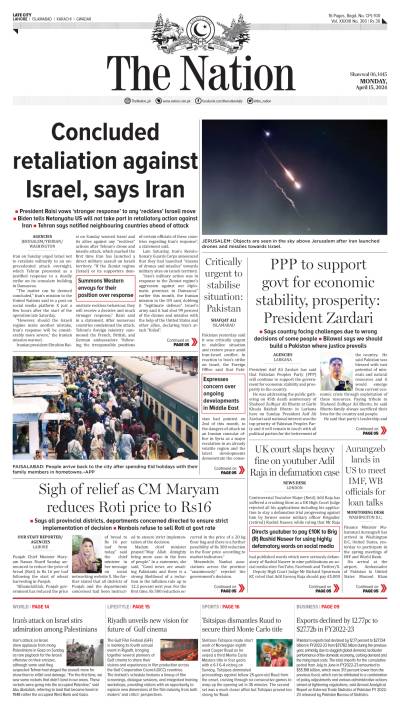In the current national economic scenario marked by loans, loans and loans, Pakistan is unfortunately caught in a serious debt trap due to the failures of economic managers over the past decades. Basic changes in economic policies aimed at drastic reforms are needed to reverse this downtrend aimed at fast track growth of national wealth.
According to latest figures released by the State Bank of Pakistan and Federal Bureau of Statistics, external debt liabilities stand around 7795 billion rupees equivalent to US $ 49 billion dollars. The domestic debt is around 16415 billion rupees which is equivalent to 102 billion US $. According to reports, the government borrowed 9.85 billion dollars doing 2018-19 to pay off $ 8.94 billion external loans.
Reforms imperatives
All the loaning bodies like IMF, World Bank and Asian Development Bank have stressed for major reforms in Pakistan Economy.
It is highly imperative to put the national economy on a high economic growth path in real terms based on actual and advanced productivity trajectory in each sector of the national economy. The following parameters will have to be addressed through massive reforms, coupled with short term and long term action plans free of “babu culture” and with a strong political will at the top to implement them. These factors alone can generate real wealth for the national economy to pay off the current public debt liabilities in a few years and make Pakistan economically self-reliant in the very near future.
Taxation is only one national income resource. Too much stress on this area can prove counterproductive, enhance inflation and undue price hike. Other recourses of national income need to be developed on a fast track.
‘Babu Culture’:
This is the core area that eats away the effects of all good policies and plans. Bangladesh, on independence, drastically changed the old complex procedures breeding red-tape-ism and corruption. Services reforms based on results achievements and market orientation, are needed to meet the challenges of public welfare, accountability and freedom from corruption. About forty percent of the budget is wasted through red-tape-ism, delayed and costs escalated projects and corruption. This needs drastic reforms.
Agricultural and industrial productivity growth:
This aided with high value addition is the most vital need to add real national wealth. Fast track GDP growth strategies and implementation plans are sine qua non to high growth targets achievements. In this connection, the roles of agricultural and industrial productivity indices are very vital. Presently these parameters are very low in our national economy. This requires necessary reforms package and pragmatic policies to enhance productivity levels in agriculture and industry. The present National Productivity Organisation needs to be overhauled, strengthened and reorganised professionally. Cost of production needs to be cut through modern technologies. Innovation and technology up-gradation are needed, based on international models. Research and Development plays a massive role in boosting industrial and agricultural productivity.
Mass industrialisation:
Aggressive industrialisation policies are needed to be launched in the SME sectors and large industries focusing on exports orientation. This alone would help achieve high growth targets. It would be advisable to set up public sector companies to ensure the fast track implementation of industrialisation programs based on simplified procedures and updated methodologies.
Corruption: Corruption eats away a sizeable chunk of our national resources and adversely affects public welfare policies through red-tape-ism. It can be checked through reforms and by using intelligence agencies as well. However honest and good political leadership, efficient accountability framework and an effective parliamentary system alone can minimise corruption.
Agricultural Reforms: Agriculture is the mainstay of our economy. On the basis of consultation with all stake holders and agricultural experts, comprehensive agriculture reforms policies need to be introduced with the following objectives;
a- To achieve higher per acre yields.
b- To improve quality of agricultural products.
c- To boost exports.
d- To introduce new crops.
e- Farmer empowerment and training.
f- To strengthen the Agriculture Extension Programs to reach the farmers effectively.
Control of wasteful expenditure:
A nation gripped by economic crises has to adopt austerity and economical ways to cut wasteful and luxuriant expenses in government and public sector organisations. The number of ministries needs to be cut and reduced to the minimum. International models of developed democracies need to be followed.
Intensifying use of modern technologies:
Technology advancements are fast modifying public sector, industrial and agricultural methodologies worldwide. Information and communication technologies are playing a pivotal role. Resultantly higher efficiencies, costs reduction and value addition in operations are being achieved. In Pakistan also, updated technologies, new organisation and management methods and global standards need to be introduced fast to achieve higher national growth in each sector of national economy our public sector.
Our R&D organisations have so far failed to achieve market driven policies and needed results. These need to be reformed drastically. R&D achievements in some countries have revolutionized economies like South Korea.
Education and literacy:
High literacy rate and education spread at least up to higher secondary levels are key to long term growth and strong economy. Enhanced economic resources, allocations for education and Public Private Partnerships in this sector can help boost literacy rates. Economically self-reliant nations today have high literacy rates.
Exports:
Pakistan’s current exports levels are going down. Focus should be shifted more on value-added exports especially for the engineering goods and machinery, which has high export potential. JF- 17 thunder Aircraft & Alkhalid Tank an excellent achievements of our defence industry which needs all out support for further development and marketing. Likewise new markets for enhancing exports need to be explored. Defence items can achieve high export targets. With good planning and efforts, Pakistan can achieve an export target of fifty billion US$ per year in a short time.
Likewise skilled Pakistani Workers should be sent to friendly countries more and more to enhance overseas Pakistanis remittances. The Federal Government can play an effective role in this area.





